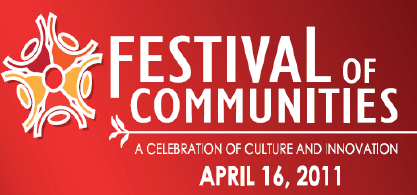Location
University of Nevada, Las Vegas
Start Date
16-4-2011 10:30 AM
End Date
16-4-2011 10:50 AM
Description
Research has shown that a gene from C3 xerophyte Larrea tridentata (creosote bush), LtWRKY21, is involved in pathways governing creosote bush’s high tolerance to environmental stress. By understanding the way in which creosote bush adapts to drought, crop plants can be engineered to be more drought tolerant during times of imminent global climate change. To study the underlying mechanisms of creosote bush drought response, the LtWRKY21 gene was mobilized into the model organism Arabidopsis thaliana. Chlorophyll degradation, cellular electrolyte leakage, and water content in leaves will serve as indicators of drought tolerance in LtWRKY21-transgenic A. thaliana after treatment in chemically simulated drought.
Keywords
Arabidopsis thaliana; Creosote bush; Larrea tridentata; Plants — Drought tolerance
Disciplines
Desert Ecology | Ecology and Evolutionary Biology | Genetics and Genomics | Plant Breeding and Genetics | Plant Sciences
Language
English
Included in
Desert Ecology Commons, Genetics and Genomics Commons, Plant Breeding and Genetics Commons
Oral presentation: Plant genes and drought tolerance
University of Nevada, Las Vegas
Research has shown that a gene from C3 xerophyte Larrea tridentata (creosote bush), LtWRKY21, is involved in pathways governing creosote bush’s high tolerance to environmental stress. By understanding the way in which creosote bush adapts to drought, crop plants can be engineered to be more drought tolerant during times of imminent global climate change. To study the underlying mechanisms of creosote bush drought response, the LtWRKY21 gene was mobilized into the model organism Arabidopsis thaliana. Chlorophyll degradation, cellular electrolyte leakage, and water content in leaves will serve as indicators of drought tolerance in LtWRKY21-transgenic A. thaliana after treatment in chemically simulated drought.


Comments
Poster co-authors: Liyuan A. Zhang, Lingkun Gu, and Qingxi J. Shen, University of Nevada, Las Vegas
Presentation not available
This project was supported through NIH Grant # P20 RR-016464 from the INBRE Program of the National Center for Research Resources.